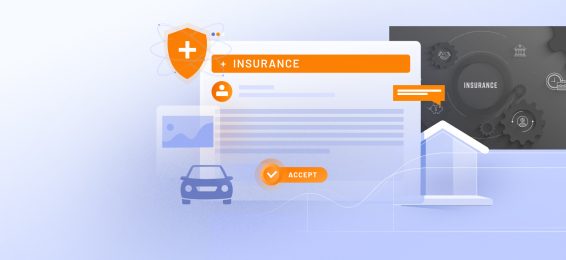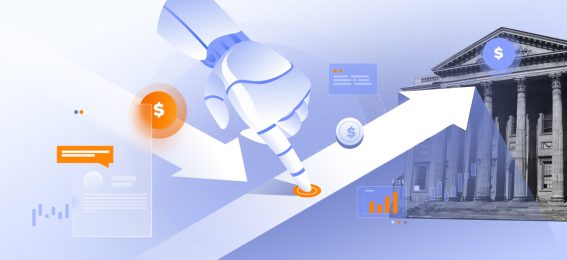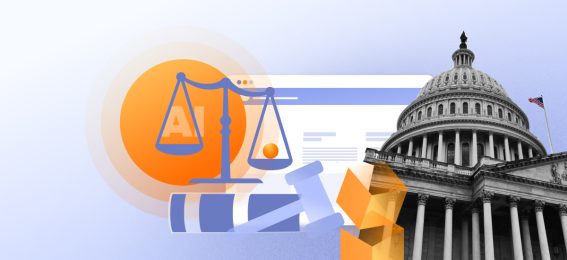Note: This is the second article in our ongoing series exploring how AI is transforming claims organizations. The first article examined the urgent operational pressures facing claims teams today. The third will offer strategic guidance for senior leaders looking to future-proof claims functions with AI.
Claims organizations aren’t just facing higher expectations—they’re operating in a pressure cooker. Volatile loss ratios, nuclear verdicts, talent constraints, and rising customer standards are forcing carriers to rethink every corner of the claims process.
The good news? AI isn’t just theory anymore; it’s hitting real operational use cases with measurable impact.
The U.S. property and casualty (P&C) industry, for instance, saw a net combined ratio of 96.5% in 2024, a significant recovery from 101.6% the year before. Yet lines like general liability and E&O deteriorated sharply, posting a 110.1% ratio—their worst since 2016. Meanwhile, median jury awards in nuclear verdicts doubled from $21M in 2020 to $44M in 2023, adding legal volatility to an already complex environment.
At the same time, the talent pool is shrinking. The Bureau of Labor Statistics forecasts 21,500 annual job vacancies in claims roles over the next decade. By 2030, “claims adjusters, examiners, and investigators” are expected to experience one of the fastest net employment declines, per the World Economic Forum.
And consumers? They want fast, digital-first experiences. 61% now prefer digital channels, and poor service remains the number one driver of churn.
From streamlining first notice of loss to predicting litigation outcomes and spotting fraud rings, AI is no longer a bolt-on—it’s the backbone of next-gen claims.
1. First notice of loss gets smarter and stickier
Claims retention lives or dies on first impressions. Half of policyholders are likely to churn after a single poor claims experience. What’s more, the majority now expect instant, seamless support across digital touchpoints.
That’s where AI bots come in. Today’s virtual assistants do more than deflect calls—they deliver customized, real-time conversations across SMS, web, and mobile. They can handle up to 80% of customer inquiries without human intervention, while improving satisfaction and cutting response time by 30%.
Lemonade has made headlines by using AI to settle simple claims in seconds. Progressive’s “Flo” chatbot guides customers through routine processes, freeing human agents to handle edge cases. NLP (natural language processing) helps these systems understand intent, route claims intelligently, and capture triage-ready data upstream—dramatically improving speed and routing.
2. Litigation management: AI for the courtroom, not just the claim file
Legal costs are skyrocketing, and it’s not just due to complexity. Attorney advertising is on the rise, and it’s working. Among consumers who saw such ads, 74% consulted an attorney, compared to 48% among those who hadn’t.
Rather than reacting with brute-force legal spend, forward-thinking carriers are turning to generative AI. Tools like Pre/Dicta use court data to predict judge behavior with 85% accuracy, enabling smarter case assignments and legal strategies.
Meanwhile, AI is drafting legal documents, running contract audits, and surfacing precedent-based recommendations—all in real time. For insurers, this means moving from firefighting to proactive, scalable legal engagement.
3. End-to-end automation: Straight-through claims processing
Picture this: a vehicle crash occurs. Within minutes, the telematics system sends data, the AI verifies policy coverage, assesses damage using computer vision, and releases payment. No adjuster required.
This is straight-through processing (STP), and it’s already being piloted by carriers like Root Insurance and Tractable. STP reduces cycle times, errors, and customer frustration. According to Inaza, it boosts transparency, lowers cost, and enhances CX in one sweep.
But STP also changes the people equation. Claims staff must be reskilled to oversee AI, not perform data entry. Adjusters evolve into escalation managers, supported by insights rather than buried under paperwork. AI-driven triage, according to Milliman, can reduce claim severity by up to 10%—a huge lever for loss ratio improvement.
4. Quality and compliance: AI that audits in real time
Legacy QA systems rely on spot-checking—a recipe for inconsistencies, bias, and slow course correction. AI changes that by reviewing every claim, every note, in real time.
Modern systems use NLP to highlight missed steps, score adjuster performance uniformly, and even automate responses to questions like “Were all inspections completed?” The ability to review thousands of files instantly creates a new level of visibility.
More importantly, compliance becomes continuous. AI agents can now flag regulatory gaps, suggest corrections, and help organizations avoid fines tied to HIPAA, GDPR, or other frameworks.
The result is a shift from reactive audit to proactive assurance, building trust with both internal teams and regulators.
5. Fraud isn’t invisible anymore
Fraud costs the P&C sector between $40B and $122B annually, with Deloitte estimating that up to 10% of all claims may be illegitimate. Traditional detection is slow, manual, and often flawed by bias.
AI-powered fraud engines scan claims against vast historical patterns and flag anomalies that would elude human investigators. These systems can reduce false positives by up to 50% while increasing real fraud detection by 20%.
HSBC saw suspicious activity detection jump 2–4x after implementing AI. Danske Bank halved its false positives while raising true fraud alerts by 50%. These are banking examples, but the underlying tech—clustering, graph learning, and adaptive thresholds—is now crossing into insurance.
Deloitte estimates that by 2032, insurers deploying AI across fraud and claims could save $80–$160B globally. That’s not a marginal gain—it’s industry-defining.
Looking ahead
AI is no longer a promise. It’s delivering real value in the field—transforming claims teams into leaner, faster, more intelligent operations. But the next chapter will demand more than pilots and point solutions.
This was part two in our series on AI in Claims. If you missed part one, go back to explore what’s pushing claims leaders to act. In part three, we’ll tackle how executives can lead this transformation, steering people, process, and tech toward long-term, AI-powered resilience.


